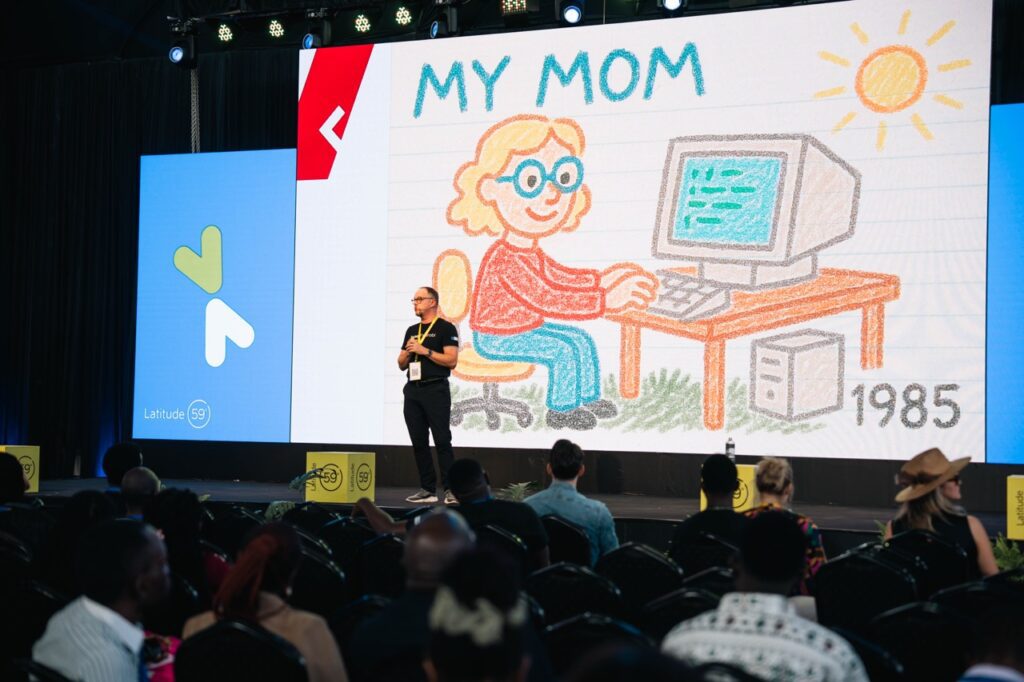Trind Ventures’ track record shows that startups with a consumer or community component have the potential for high scalability. But what is the secret behind this scalability, and how the founders can reach this potential?
In this blog post, Trind Ventures will demystify the consumer or community component and share some insights on how you as a founder can achieve high data-driven scalability and convince investors to fund your A-round.

What Is a Startup with a “Consumer or Community Component”?
In some discussions, our focus on startups with a consumer or community component has been understood as us focusing on investments in B2C. And while our strategy includes B2C, our investment focus includes B2B as well. So simply looking at the sector does not tell whether the startup has a consumer or community component or not.
At Trind, we define a startup with a consumer or community component as a startup that has the elements of a large audience, short sales cycles, frequent and growing purchases, and low churn & high retention. Later in this blog post, we will explain why these elements become a part secret source for fast and scalable growth.
If you have a B2C startup, most likely your startup does by definition fall into the category of having a consumer or community component. But for B2B startups, a deeper understanding is needed. To have a consumer or community component, you should base your B2B startup should either on a community, provide B2B software in a consumerized manner, or employ superfan and influencer-driven business models.

Some examples of these can be found below:
- A community-based B2B startup could be e.g. a platform or a marketplace that has a lot of users on either the demand or supply side (or, preferably, both). Communities can also be based on a user or fan base in a free version of a solution, creating demand and purchases for a paid version as well.
- Consumerized B2B software includes e.g. SaaS solutions that are subscribed directly from the startup’s website with little or no interaction with the startup and the customer. This could be for example a SaaS solution in which an employee first purchases a subscription for herself, then adds her team, and later upgrades with some add-on features.
- In influencer-driven business models, the distribution of the solution relies on, not so surprisingly, influencers. These can be paid influencers, organic, or a crossover, i.e. influencers who have organically found the product but get some benefits from promoting those. While these models are more common with B2C, those can be applied in B2B as well.
Examples of CCC Startups in Trind Ventures Portfolio
Neural DSP provides musicians with software and hardware. Their core is digitally creating the sounds of analog amplifiers. Doing a bulk of their sales through social media, their business model relies on influencers showcasing their products, as well as the strong community that has been built around them.
Fractory provides an on-demand metal fabrication platform. Their case is a good example of a CCC startup in the B2B sector: They are a marketplace, connecting metal fabricators as well as their customers. Thus, the marketplace is relying on community, both on the supply as well as the demand side.
Boksi is another example of a B2B CCC startup: Providing a marketplace for branded content and influencer marketing, it connects a community of influencers with brands and businesses. And with very straightforward self onboarding, their solution falls into the category of consumerized B2B.
Finally, the avatars provided by Ready Player Me highlight one important element of CCC: The network effect and product-led growth. People see avatars made with Ready Player Me and come to the platform to create their own. More importantly, as more solutions integrate with Ready Player Me, the more possibilities the end-users have for using their existing avatar. Thus, the end-users get a consistent identity across a wide range of metaverse solutions.

Characteristics of a Consumer or Community Component in a Startup
What are the characteristics of a consumer or community component in a startup?
For one, you build your business model on small purchases (and a lot of those). You try to combine these small purchases with frequent and growing purchases. As a result, you can keep your sales cycles short.
From a growth model point of view, you should rely either on product-led growth or marketing-led growth. There you find an audience driving purchasers, instead of your vendors driving your sales. As you can see, sales-led growth does not work with a consumer or community component.

Feedback Loop and Finding the Product/Market-Fit
The combination of a lot of small purchases and short sales cycles leads to two things:
- First, you accumulate a lot of data from its customers, and
- Secondly, you accumulate this data fast.
As a result, you get a fast feedback loop that constantly provides you with new data. And this data you could (and should) use to develop the product, the business model, and the go-to-market model.
The short sales cycles mean that you can quickly test what works and what does not work. And with the quick testing, and following the data with the right metrics, you can iterate more quickly toward a product-market fit and a highly scalable business model. The best founders use the feedback loop to constantly improve their offering, even after finding the product-market fit.
Feedback Loop, Scalability, and Funding
Once product-market fit and a highly scalable business model are found, you are ready to be scaled with additional funding.
At this point, you have:
- Validated the market need, and its ability to serve that need by having the product/market fit
- Metrics to build the road map and investment plan, showing to the investors how their investment will be used and how that investment turns into cash flows and increase in valuation of their investment, and
- Data to back both of the above.
In other words, you are ready to secure a sound A-round, and even beyond.
Takeaways
Startups with a consumer or community component generate a lot of data, and they generate it fast. The best founders can use this data to iterate their startups quickly and build highly scalable companies that attract investors. Faster feedback, faster results, faster growth.
If you build your startup on the elements of a large audience, short sales cycles, growing purchases, and low churn & high retention, you are well on your way to creating a startup that will outperform your competition.
While sales-led business models may struggle to maintain even linear growth, consumer-or-community-component-driven business models allow exponential growth when the product-market fit is achieved.
We at Trind believe that these startups can outpace the others in their growth; that is why we are betting on those in our investment strategy. Focusing on the consumer or community component does not define our investment sector, investment vertical, or industry. What it defines are the business models we invest in.
***
The article was crafted by Reima Linnanvirta, a Helsinki-based Partner at Trind Ventures, a seed-stage VC focusing on companies with a consumer or community component; and originally published in Trind Ventures’ Medium account.
At Latitude59, Trind Ventures can be seen on the stage at “VC’s Reverse Pitch Competition” on Friday at 11:40, where selected VC funds can present themselves to the audience of startups. Come and cheer them on!


